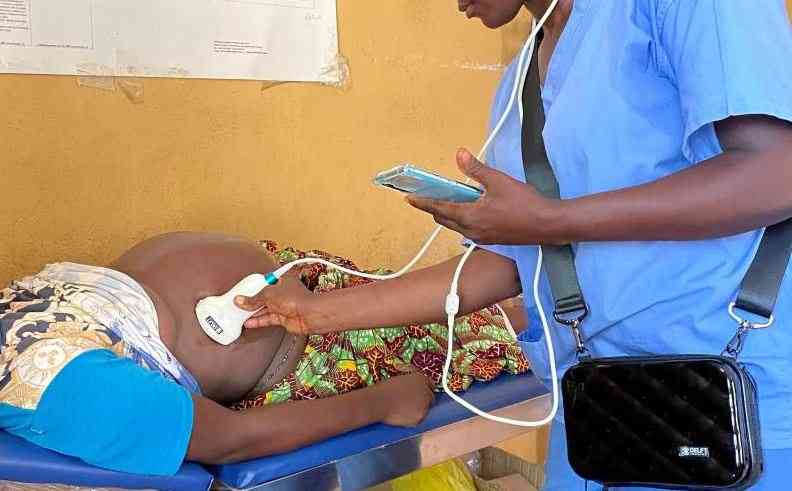Flu Activity In US Now May Be Highest Since 2017-2018
The number of prescriptions for Tamiflu (oseltamivir), an antiviral used against influenza A and B, ... [+] has been surging in January and February, according to data assembled by GoodRx from pharmacies and insurers. Such numbers have already far surpassed those seen over the past seven flu seasons over and may soon exceed what was seen during the 2017-208 flu season. (Photo Illustration by Mario Tama/Getty Images)
Getty ImagesAre you sick of what’s been happening in January and February? Well, you would not be alone. This flu season is already the worst flu season in seven years and could soon overtake the 2017-2018 flu season in badness. That’s based on data from both Centers for Disease Control and Prevention FluView’s tracking of flu testing results and GoodRx’s tracking of Tamiflu prescriptions being filled.
CDC data showed that during the week that ended February 1, nearly a third (31.6%) of the reported flu testing results came back positive. That was the highest this percentage has reached in at least a decade. And whenever the CDC does come out with the February 2 through February 9 set of flu numbers (which may or may not be at the end of this week given the current who-knows-what’s-going-on situation with the CDC and other federal science organizations), chances are this percentage may be even higher.
That’s because the numbers from GoodRx suggest that flu activity for this flu season didn’t quite hit its peak yet on February 1. GoodRx has been tracking the number of Tamiflu (oseltamivir) prescriptions filled at a nationally representative sample of around 50,000 pharmacies in the U.S. each week, based on data from the pharmacies and insurers. The graph below shows the Tamiflu prescription fill trend lines for the current flu season (blue line) and previous ones (orange and green lines):
(Image: Courtesy of GoodRx)
Courtesy of GoodRxAs you can see, the blue line has been shooting upwards like a Taylor Swift song since the second week in January. It’s already far higher than the different green lines, which depict the averages for other years. The blue line hasn’t quite yet reached the top of the orange line, which represents what happened during the 2017-2018 season. But don’t bet against blue. One peek at the trajectory of the blue line suggests that it hasn’t quite peaked yet.
What does Tamiflu have to do with the flu? Well, it is called Tamiflu rather than Tamiwho. This commonly used antiviral can inhibit the replication of influenza A or B viruses. That’s why oseltamivir is most effective in reducing the duration and severity of flu symptoms when the prescription medication is taken as soon as possible after exposure to the virus or within 48 hours of symptoms emerging. Beyond that window the virus probably has already multiplied enough in your body to do the whole voodoo that the flu do to you.
Of course, not everyone who catches the flu will take Tamiflu. As Tori Marsh, M.P.H., the director of research at GoodRx mentioned, the number of Tamiflu prescription fills "doesn’t capture those who didn’t see doctors and those may have gotten prescriptions and didn’t fill them.”
Nevertheless, Marsh did point out that the trends in Tamiflu prescriptions filled have over the years correlated well with CDC data on flu test positivity, clinic visits and hospitalizations. “The numbers represent around 95% of all retail pharmacies," Marsh explained. "It is a good indicator of the trends in flu activity.”
The CDC has estimated that at least 24 million people have caught the flu so far this season, with around 310,000 hospitalizations and 13,000 deaths. This last number includes a reported 57 children who have died. Ten of the pediatric deaths were reported during the week ending on February 1.
The main culprits behind the current flu surge have been A-listers, so to speak. The CDC shows that the vast majority of the viruses (4,264 of 4,377) that were typed during the week ending on February 1 turned out to be influenza A versions of the virus rather than influenza B. And of the influenza A viruses, 53.7% were influenza A(H1N1)pdm09 and 46.3% were A(H3N2).
Now, influenza isn’t the only virus to be worried about these days. As I have written before in Forbes, the U.S. is in the midst of a quad-demic with four different viral illnesses surging. In addition to influenza, you’ve got the respiratory syncytial virus, COVID-19 and norovirus going especially viral, so to speak. It’s not completely clear what the current activity levels of these other viruses may be since there are still many gaping holes in the U.S. viral surveillance systems. The CDC does have RSV-Net, which monitors laboratory-confirmed hospitalizations associated with RSV. However, this will overlook those RSV infections that didn’t result in hospitalization. And while the Norovirus Sentinel Testing and Tracking (NoroSTAT) network, comprised of 14 state health departments working together with CDC, can give you a sense of the number of reported norovirus outbreaks, many individual cases may go missing.
Then there’s that thing called COVID-19. Remember that? The CDC has been reporting COVID-19 test positivity, hospitalizations and deaths as well as wastewater surveillance results. However, since many people may have stopped testing themselves for COVID-19 and reporting positive tests to others, these numbers may not accurately reflect what’s going on with COVID-19.
GoodRx has also been tracking the number of Paxlovid and Lagevrio prescriptions filled. The following graph shows that there was a bump in such prescriptions in December 2024 and January 2025, which has come down a bit:
Image: Courtesy of GoodRx
Courtesy of GoodRxThe graph also shows that the number of such prescriptions has been significantly lower than the past four years. Take such number with an instant noodles bag of salt though. “There may be different behaviors prescribing and filling Paxlovid and Lagevrio,” warned Marsh. “People may not be treating COVID as readily now as before.”
So, it’s still a good idea to take precautions against COVID-19, which incidentally overlap significantly with precautions against RSV and the flu. That means washing your hands thoroughly and frequently, keeping high-touch surfaces clean and disinfected, maintaining good ventilation and air purification in indoor spaces, wearing N95 face masks when in close quarters with others and getting the available vaccines. Otherwise, the current situation in the U.S. may make you sick in more ways than one.











